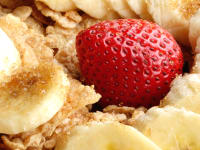Here's why you should be using your fridge's crisper drawers
Fruits and veggies strike a balance
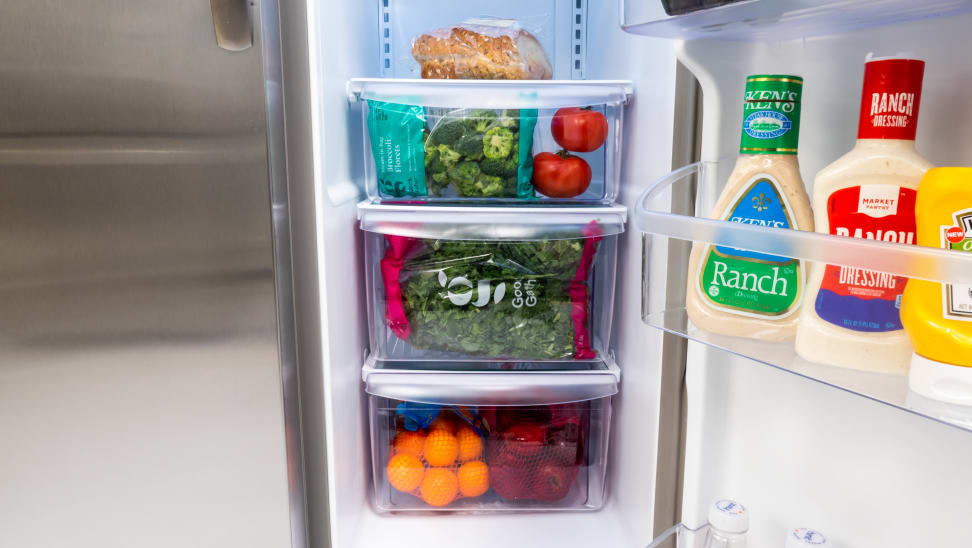 Credit:
Reviewed / Kyle Hamilton
Credit:
Reviewed / Kyle Hamilton
Products are chosen independently by our editors. Purchases made through our links may earn us a commission.
One of the more common complaints in user-submitted fridge reviews is people voicing bewilderment at how their crispers could possibly function properly. The feedback exclaims, "There's a huge gap at the top! It doesn't create an airtight seal! What can the humidity slider do when there's this huge gap!"
Crispers are seemingly very basic—often just a single-piece plastic bin—but the simplicity of their design doesn't also mean they're ineffective. And, there are right and wrong ways to use your crispers.
For the sake of fresh, flavorful produce everywhere, let's quickly review the basics of what crispers are, how they work, and how to best use them.
What are crispers?
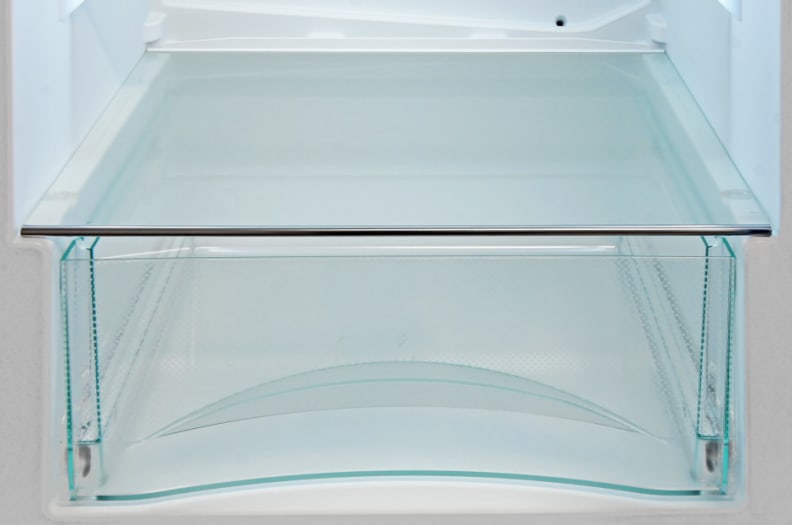
While some crisper drawers are fancier than others, they all function in roughly the same way: Create a higher-humidity environment for fruits and veggies, to stave off wilting.
The typical crisper (sometimes called a "produce drawer" or "humidity drawer") is a partition inside your refrigerator that offers a more humid environment than the rest of the interior. These bins are ideal for storing fresh fruits and vegetables because the humidity retention causes them to wilt more slowly. This is important, because your fridge filters out humidity as it circulates the air, which can wilt plants much faster than you'd otherwise expect.
Crisper drawers also need to release humidity to help prevent rotting. This is why the drawers never have air-tight seals.
Many crispers have a humidity control setting, which is a tiny sliding door that lets you adjust how much moisture and gas can escape. The wider this aperture, the more humidity and gas gets through.
And that's all there is to crispers. They're seemingly simple pieces of technology. Despite this, there's still some nuance to using them. By far, the most common crisper pitfall is mixing fruits and veggies.
Keep fruits and vegetables separate
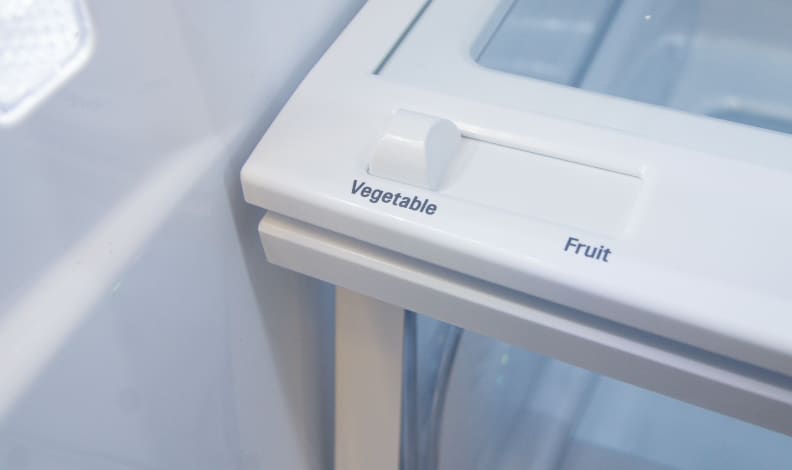
The "fruit" setting on your crisper's humidity slider typically indicates a lower-humidity environment; "vegetable" indicates high humidity.
If you have two crisper drawers, do use them both. Use one for fruits and one for vegetables. The reason for this is ethylene gas, a plant hormone released by fruits that can cause veggies to ripen faster.
This is why many crispers label their sliders with a "Fruit" (low humidity) to "Vegetable" (higher humidity) scale: You don't want to keep both in the same drawer, because it will likely cause your veggies to rot much more quickly than they would otherwise.
Unfortunately, it's not as simple as "keep fruits in the fruit drawer, and veggies in the vegetable drawer," because not all fruits and veggies are created equal. Watch out for these tricky exceptions:
The High Humidity Drawer
- Most vegetables
- Watermelon
- Unripe (green) bananas
- Strawberries
- Okra
- Herbs
The Low Humidity Drawer
- Ripe (yellow) bananas, and also plantains
- Most other fruits
- Figs
- Avocados
Some people even keep a list like the one above on or even in their refrigerators for quick reference. While this may seem like overkill, careful produce drawer storage can significantly prolong the life of your leafy greens.
When in doubt, consult the internet to see what fruits and veggies are the biggest ethylene gas producers and what ones are the most sensitive to them. Then make sure to keep these items separate. If you only have one crisper drawer, store the ethylene-producing fruits in there to help keep the gas contained.
Crowded crispers are good, actually
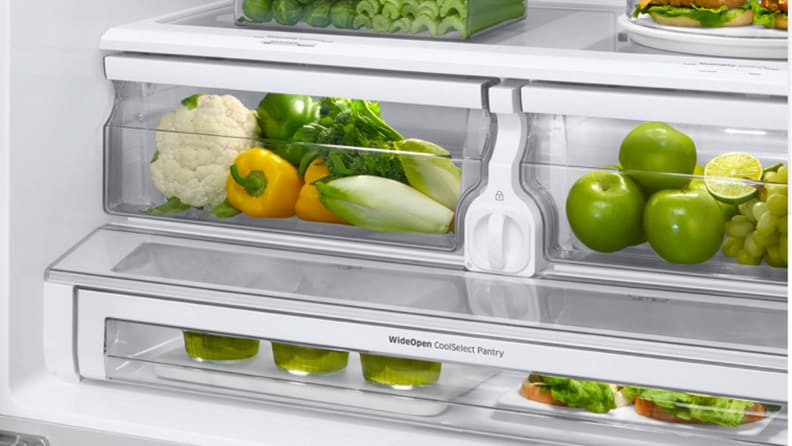
Crispers are most effective when ethylene gas producing items are kept separate from items that are sensitive to ethylene gas, and when the drawers are filled up about 67% of the way.
One of the cardinal sins of refrigerator organization is overstuffing your fridge. Not only does this make it easier to forget about buried items until they expire, it can also significantly impact your fridge's performance by blocking airflow. Cold air has to circulate around your fridge, and overcrowding can cause temperatures at the bottom of your fridge to warm to unsafe temperatures.
However, the opposite is true for your crispers: They work best when they're about 67% full. This gives them enough room that they're not overly compressed, helps retain humidity, and maintains some airflow between your veggies. Make sure you store heavier fruits or veggies underneath more delicate ones to avoid crushing.
Need a fridge with a good crisper? We've got you covered
While crisper drawers may not necessarily a top consideration when shopping around for a new fridge, those with quality crispers can help extend the lifespan of your fruits and veggies—a boon for anyone with largely plant-based diets. Check out these fridges if you want to ensure your fresh greens have maximum longevity:
- Bosch B36CD50SNS—This Bosch's crispers had some of the best humidity control we've seen, releasing the bare minimum over time.
- Whirlpool WRF535SWHZ—These crispers had a robust build quality and were only second to the Bosch in terms of humidity control.
- LG LRMVS3006S—Come for the spherical ice, stay for the excellent crispers.
- Frigidaire FFBN1721TV—Your veggies will thank you: This Frigidaire's crispers retain moisture about 58% better than the average fridge.
- Whirlpool WRX735SDHZ—Not only will this Whirlpool's crispers keep humidity loss to a minimum, they also have an interesting design, suspended above the bottom of the fridge.
Keep eating fresh!
If you haven't been following these tips in the past, but start to now, you may notice your fresh produce suddenly lasting days or weeks longer. You're not only reducing your food waste, you're preserving more flavor in your fresh food, as well.
While there are still uses for overripe produce—we love a good banana bread—nothing beats the fresh stuff.


